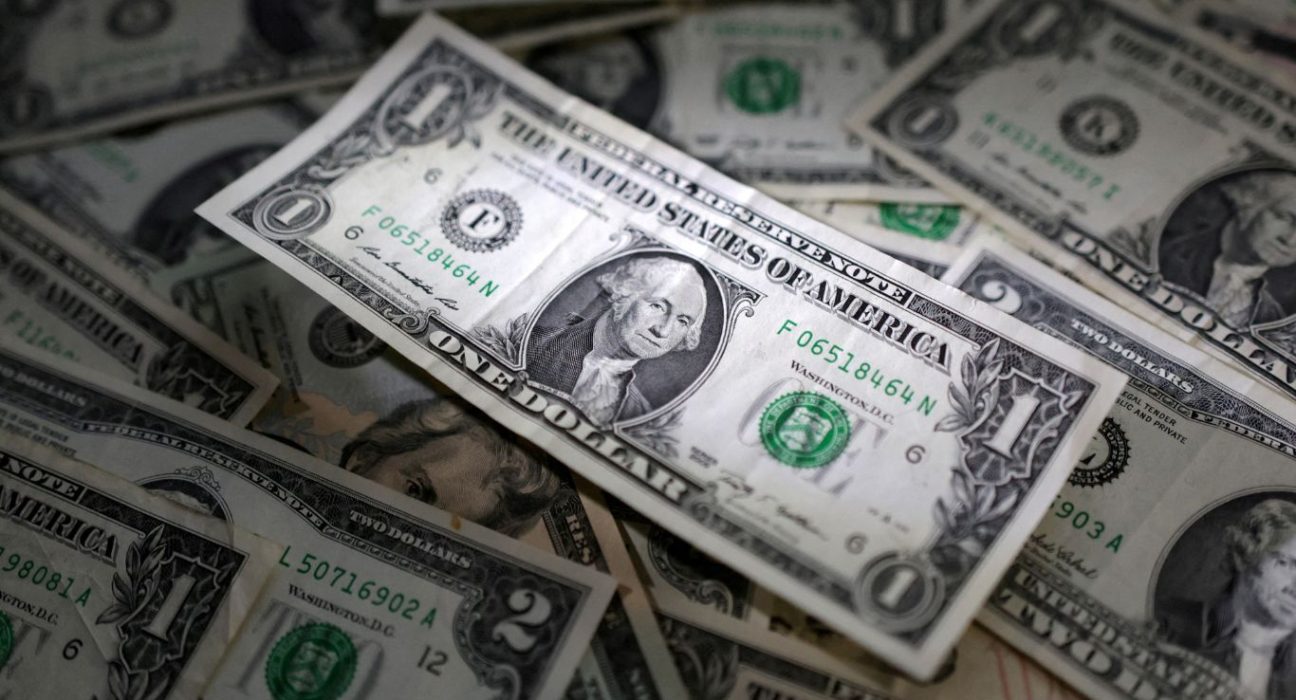The U.S. dollar index (DXY), which measures the strength of the greenback against a basket of six major currencies, rose to its highest level since March 17 on Wednesday, reaching 104.16 at one point. The index has gained more than 3% since the start of May, as investors seek safety and stability amid rising inflation, geopolitical tensions, and pandemic-related challenges.
What is the U.S. Dollar Index?
The U.S. dollar index was created by the U.S. Federal Reserve in 1973 to provide an external bilateral trade-weighted average value of the U.S. dollar against global currencies. The index is calculated by comparing the U.S. dollar with six other currencies: the euro (57.6% weight), the Japanese yen (13.6% weight), the British pound (11.9% weight), the Canadian dollar (9.1% weight), the Swedish krona (4.2% weight), and the Swiss franc (3.6% weight).
The index is a relative measure of the U.S. dollar’s strength or weakness, not an absolute one. It does not reflect the purchasing power of the U.S. dollar in different countries, nor does it account for all the currencies that are traded in the global market. The index is also influenced by factors such as interest rates, monetary policy, trade balance, and market sentiment.
Why is the U.S. Dollar Index Rising?
The U.S. dollar index has been on an upward trend since May, as several factors have boosted its appeal as a safe-haven asset.
First, inflation fears have increased in many countries, especially after the U.S. reported a 4.2% annual rise in consumer prices in April, the highest since 2008. Higher inflation erodes the value of money and reduces its purchasing power over time. Investors tend to flock to the U.S. dollar as a hedge against inflation, as it is seen as a stable and reliable store of value.
Second, geopolitical tensions have escalated in recent weeks, creating uncertainty and risk aversion in the global market. The ongoing conflict between Israel and Palestine, the cyberattack on a major U.S. pipeline, the political turmoil in Belarus, and the strained relations between China and Australia are some of the examples that have fueled demand for the U.S. dollar as a safe-haven currency.
Third, pandemic-related challenges have also supported the U.S. dollar index’s rise, as some countries struggle to contain new outbreaks and variants of the coronavirus, while others face vaccine shortages and delays. The U.S., on the other hand, has made significant progress in its vaccination campaign and economic reopening, which has enhanced its relative attractiveness and competitiveness.
What are the Implications of a Higher U.S. Dollar Index?
A higher U.S. dollar index has both positive and negative implications for different sectors and regions of the world.
On one hand, a stronger U.S. dollar benefits American consumers and importers, as it makes foreign goods and services cheaper and more affordable. It also helps reduce inflationary pressures in the U.S., as it lowers the cost of imported inputs and commodities.
On the other hand, a stronger U.S. dollar hurts American exporters and manufacturers, as it makes their products more expensive and less competitive in foreign markets. It also reduces their profits when they repatriate their earnings from abroad.
A higher U.S. dollar index also affects other countries that have pegged their currencies to the U.S. dollar or have large amounts of dollar-denominated debt or assets. For example, some emerging markets may face difficulties in servicing their debt obligations or maintaining their currency stability when the U.S. dollar appreciates.
Moreover, a higher U.S. dollar index may have an impact on global trade and growth, as it may dampen demand for commodities and other goods that are priced in dollars.
What are the Outlook and Challenges for the U.S. Dollar Index?
The outlook for the U.S. dollar index depends on several factors that may change over time.
Some analysts expect the U.S. dollar index to continue its upward momentum in the near term, as inflation fears, geopolitical risks, and pandemic uncertainties persist.
Others argue that the U.S. dollar index may face downward pressure in the medium to long term, as other countries catch up with their vaccination programs and economic recoveries, narrowing the gap with the U.S.
Additionally, some factors that may challenge or limit the U.S. dollar index’s rise include:
– The Federal Reserve’s accommodative monetary policy stance, which may keep interest rates low and limit the yield advantage of holding dollars.
– The Biden administration’s fiscal stimulus plans, which may increase government spending and borrowing, widening the budget deficit and adding to public debt.
– The potential for a weaker-than-expected economic performance or a resurgence of COVID-19 cases in the U.S., which may undermine confidence and demand for dollars.
– The possibility of a coordinated intervention by other central banks or international organizations to prevent excessive volatility or misalignment of exchange rates.
In conclusion, the U.S. dollar index is a useful indicator of the relative strength of the greenback against a basket of major currencies, but it is not a comprehensive measure of its absolute value or purchasing power. The index is influenced by various factors that may change over time, creating opportunities and challenges for different sectors and regions of
the world.










